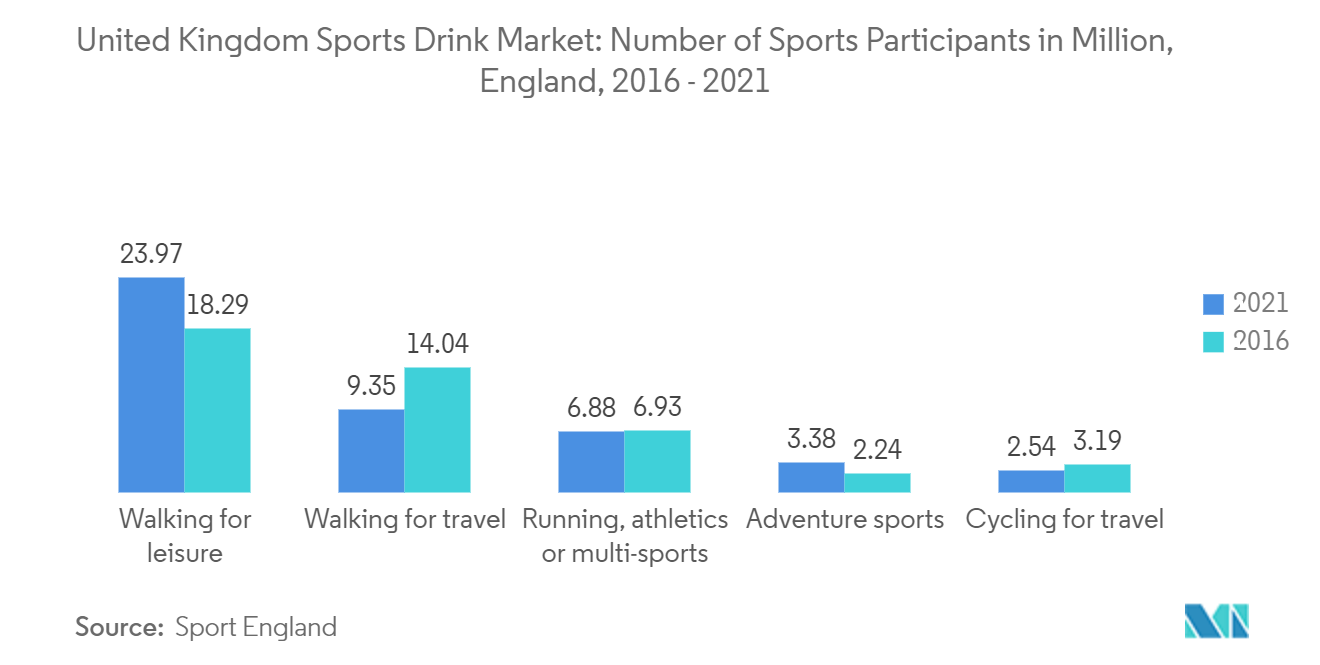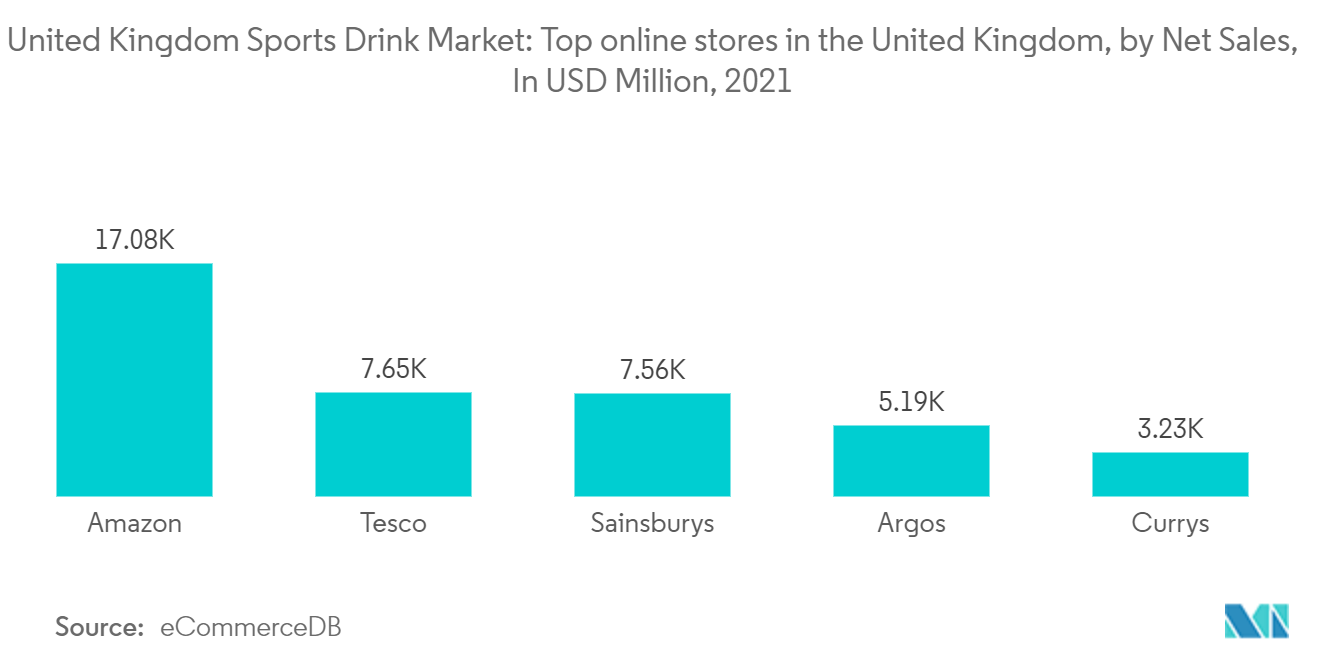Market Trends of United Kingdom Sports Drink Industry
Increased Sports Participation Driving Sports Drink Demand
The sports drink market is still mostly driven by the popularity of athleisure trends like health and wellness. An increasing number of people participating in sports, such as athletics, bodybuilding, weightlifting, and cycling, drives the market for sports drinks in the United Kingdom. For instance, according to Sport England, in England, at least twice a month between May 2020 and May 2021, 1.5 million people played team sports. In line with the athleisure trend, athletes look for different kinds of sports drinks to meet their needs for nutrition and water. Athletes drink sports drinks to stay hydrated and replace carbs, electrolytes, and other nutrients that they lose when they work out. As athletic participation in the region has increased, the need for sports replenishment and nutrition has also increased. Thus, healthy hydration trends in athletics have been a key factor in the growth of the United Kingdom sports drink market.
To compete with the market leaders in the sports drink market, key players are investing more in identifying the market gap and building the brand image through ideas and concepts that already exist. Moreover, key players understand that to promote a completely new type of product, adopting a novel approach to marketing and advertising is necessary, which is playing a key role in driving sales. For instance, in December 2022, Prime Company, developed by two Youtube stars, Logan Paul and KSI, launched Prime Hydration Drink, which is a sports drink, in the United Kingdom's two major supermarkets, Asda and Aldi. The company has made the sports drinks, which are available in different flavors.

Increase in Online Retail Sales Driving the Demand
The increase in online retail sales also increased the sales of sports drinks. The growing number of internet users boosts the growth of this segment. According to the Office of National Statistics, United Kingdom, the number of adults using the internet increased from 91% in 2019 to 96% in 2020. Also, according to the DataReportal organization, in 2021, online users in the United Kingdom logged onto social media every day for about 108 minutes. The main reason for the increase in sales via online retail channels is convenience. Consumers find it easy to surf through the websites and choose their preferred brands. During the pandemic, when the gyms and sporting grounds were closed due to strict government regulations, many sports enthusiasts started exercising at home, which maintained the demand for sports drinks. Due to the lockdown, when most retail stores were shut, people were largely inclined toward online shopping, thus adding to the increasing sales through online retail stores. Along with online retail stores like Amazon, companies like Coca-Cola and PepsiCo extended their products to customers through their online platforms. Online retailers, including Amazon.com, Walmart, Loblaws, and others, represent the most dominant platforms in terms of the sales of sports drinks and other functional beverages.
Online retail stores have been gaining popularity as the platform features product details, a questionnaire regarding sizes, a more comprehensive selection of different brands, and a broader array of flavors and packaging, all while offering the convenience of shopping from the comfort of one's home, thereby augmenting market growth.
Product launches with new ingredients and flavors are among the key strategies followed by the players to gain more ground. Several online grocery stores are also bringing in new customers to get them used to shopping online. They do this by offering subscriptions and other ways to make sure they get the most out of the money they've already paid. Significant opportunities are prevalent for sports beverage brands to drive more revenue online, as consumers are inclined toward purchasing the products more online than in-store. This, in turn, may lead to online stores becoming a fast-growing segment during the forecast period.


